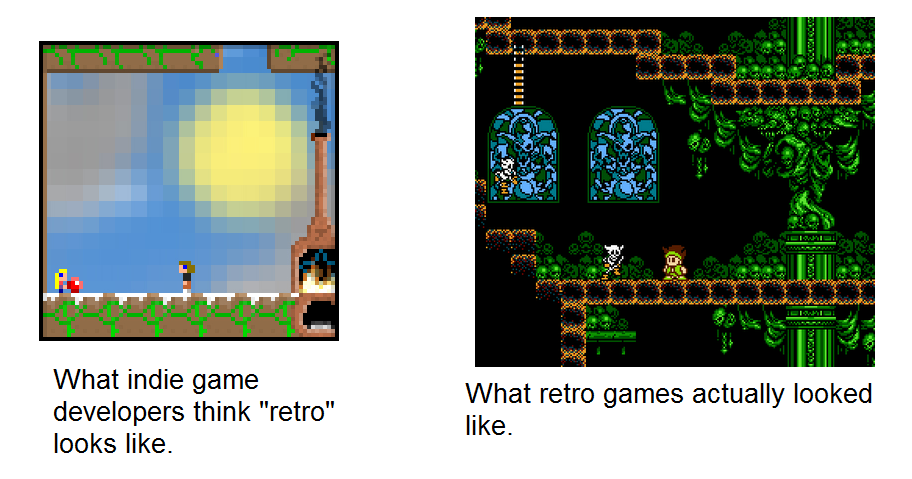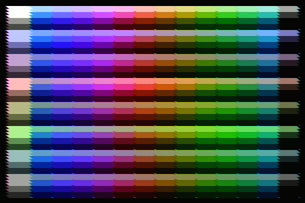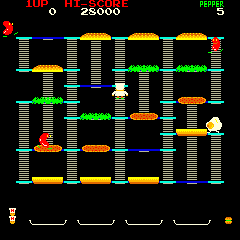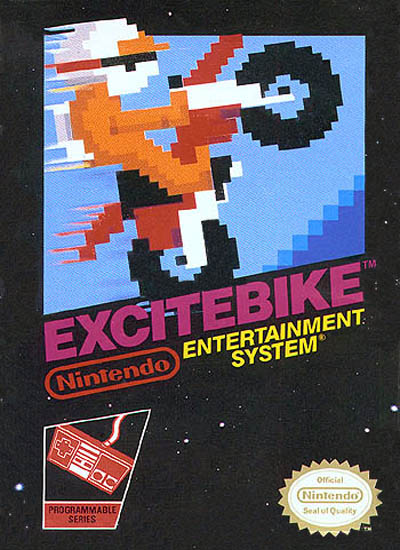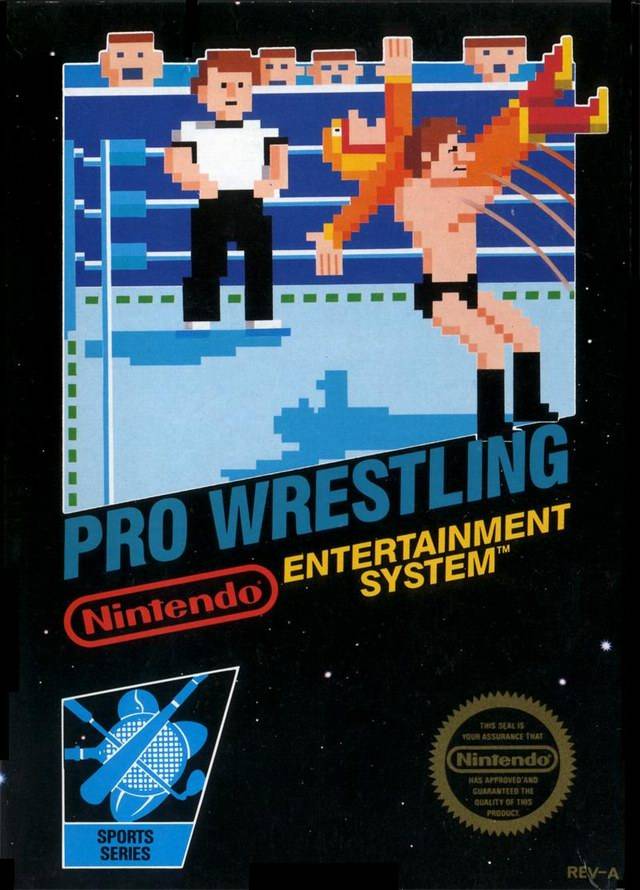I don't understand why people make a game based on the limitations of some old system, but then break some of those limitations to make cooler effects. What is the point of limiting yourself if you aren't going all the way?
Because:
1) If you really wanted to emulate 8-bit games, you shouldn't even see the damn pixels anyway, the Rare collection is a good reminder of it:
Pixel art back then wasn't meant for you to see the pixels, it was a real impressionist artwork, each pixel was a blurry spot that made sense only in a whole CRT image. Displaying it on LCD without a filter is already a betrayal of the intent anyway. So if you're making pixel art now without a blur filter, you're already working in a different context, and for different purposes. "Square" pixel art has a specific quality, and artists may want to exploit this quality without necessarily adhering to system limitations.
What "old" system is supposed to run FEZ anyway? And yet, Pixel art in FEZ looks great and fits the game perfectly.
2) The mindset is totally different.
When I played BurgerTime back then, in my head I didn't see this:
But this:
In their context of release, those graphics were the best we had, and it wasn't entirely satisfying. So games tried more to evoke things, characters and universes, create a context for the player's imagination, rather than merely be just what you saw on screen.
Game designers knew this and exploited it, for example in arcades with cabinet art:
Or even in the game itself:
Miyamoto himself explained it: the top screen in Punch Out was there just so the player mentally replaced the insufficient graphics on the bottom screen by the nice graphics on the top screen. And it worked: the overall impression was much better.
It's the exact same for, say, the manual for a game like Zelda. You read the Zelda manual, and then your imagination replaced everything you saw in the game with the stuff you saw and read in the manual - and more.
So, when a "retro" game like Bit. Trip Runner says it's inspired by Atari but shows this:
... it's not a "betrayal", it actually adapts much more faithfully how you saw games at the time than if it actually looked like a genuine Atari game, because now we don't see beyond the graphics in a game, we take them literally, whereas before they were just ground for suggestion. Those sort of "augmented retro" universes fit perfectly my experience of the times.
Short version: making a literal game that could be run on an old system isn't "faithful", because we don't use the correct screens to view them so the art is seen (and created) completely differently anyway, and because the context and therefore mindset is completely different, so the graphics would mentally be seen differently than in the genuine 8-bit context anyway.
This doesn't look terrible because pixels are tilted or different sizes:
It looks terrible because it's ugly. It's bland, it's not consistent, there is no sense of balance, it feels like a terrible patchwork of things stolen here and there. Whereas Super Mario Maker has tilted pixels and shadows, and yet it looks great (and pixels are different sizes in Popeye or Stormlord, etc).


